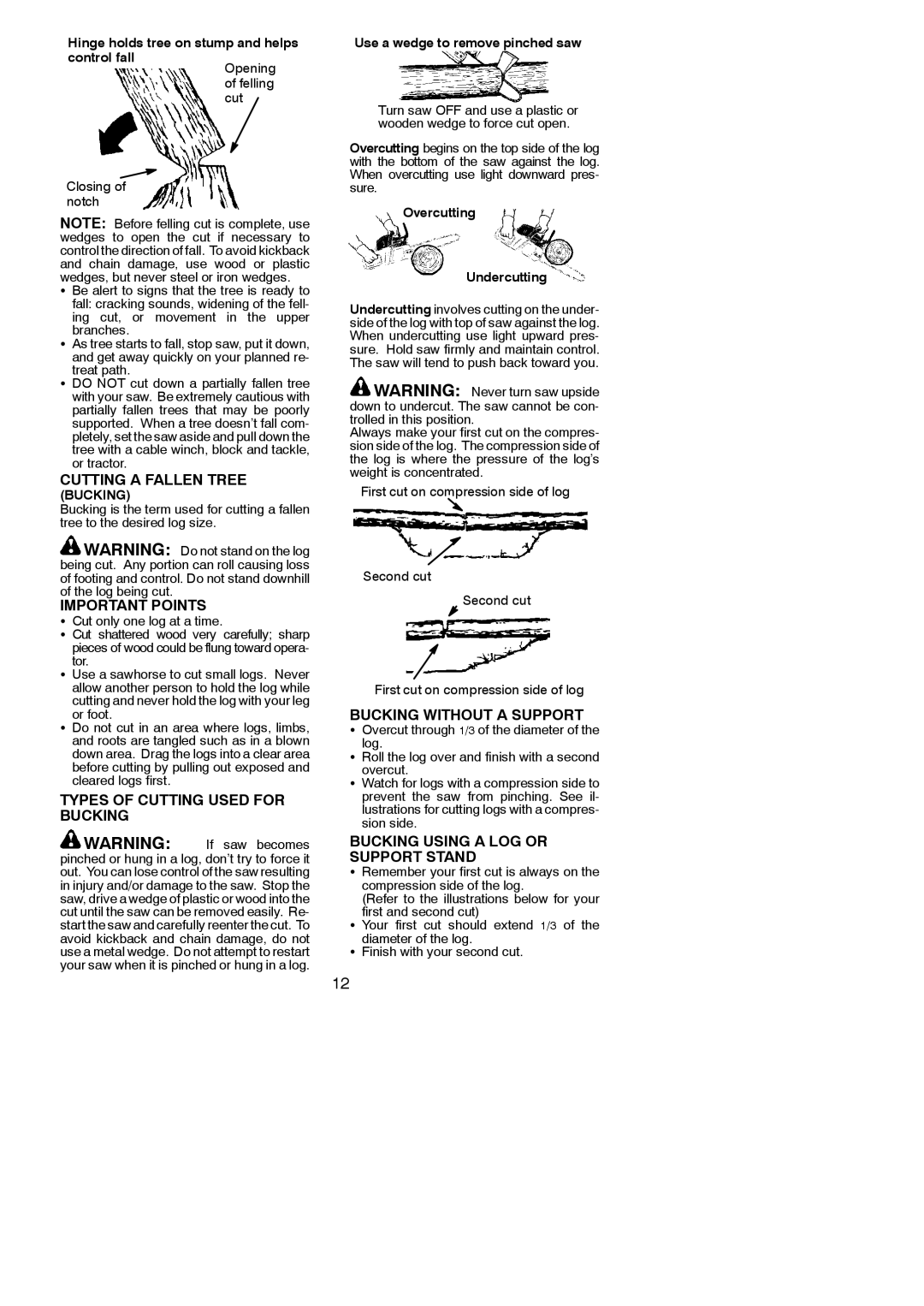PP3816 AV, PP4218 AV, PP4218 AV specifications
The Poulan PP4218 AV, PP3816 AV, and PP4218 AV chainsaws are renowned for their efficiency, power, and innovative features, making them reliable choices for both amateur and professional users. These models are designed to cater to various cutting needs, from trimming branches to felling larger trees.The Poulan PP4218 AV is equipped with an 18-inch bar and a powerful 42cc engine, offering a commendable balance of weight and performance. One of its key features is the anti-vibration system, which significantly reduces operator fatigue during extended use. The chainsaw also boasts a tool-less chain tensioning system, making it easy to adjust the chain without needing additional tools. This is especially useful for ensuring optimal cutting performance and safety.
The PP3816 AV, on the other hand, offers a slightly smaller package with a 16-inch bar and a 38cc engine. This model is designed for users who require a lightweight chainsaw for smaller tasks such as pruning and lightweight cutting. It too features the anti-vibration technology, enhancing comfort during operation. The quick start system allows for easier startups, making it accessible to users of all experience levels. Its compact design also provides excellent maneuverability, making it perfect for tight spaces.
The PP4218 AV is very similar to the original PP4218 AV, yet it incorporates further refinements in performance and ergonomics. It remains powerful with its 42cc engine and 18-inch bar but includes enhanced features such as a more efficient air filtration system. This improvement not only extends the life of the engine by keeping it cleaner but also ensures optimal performance even in dusty conditions. Additionally, it maintains the easy access to controls and the comfortable grip design that Poulan is known for, making it a favorite among homeowners and professionals alike.
All three models utilize Poulan's exclusive OxyPower technology, which delivers more power while reducing emissions. This commitment to environmentally friendly technology ensures that users can operate these chainsaws with a focus on sustainability.
In summary, whether you choose the PP4218 AV, PP3816 AV, or stick with the original PP4218 AV, each chainsaw combines power, convenience, and advanced technologies, making them excellent tools for tackling a wide range of cutting tasks.

